In the cold season: specifics of army actions in winter

Calculation of ATGMs in position. Photo by the Russian Ministry of Defense
The cold season in Europe and other regions with a similar climate is characterized by a set of various meteorological and other factors. They place special demands on the training of armies, and can also provide certain advantages. By conducting competent preparations for winter and using its characteristic features, the army can create and develop superiority over the enemy and determine the further course of events. As can be judged from the available data, the Russian group of troops involved in the Special Operation in Donbass is taking the necessary measures and maintaining combat capability.
General Frost
First of all, winter is characterized by a decrease in air, soil and water temperatures. These processes may be accompanied by wind, which increases the feeling of cold. The combination of these two factors creates not the most comfortable conditions for people and equipment and requires taking appropriate measures.
Methods and means of combating temperature decline are well known and have been proven for a long time. People need warm clothing to protect them from cold and wind. For this purpose, the armies are introducing sets of winter uniforms, the creation of which takes into account the specifics of the expected service conditions. In addition, it has become common practice for soldiers to independently purchase things and equipment in accordance with their needs and wishes.
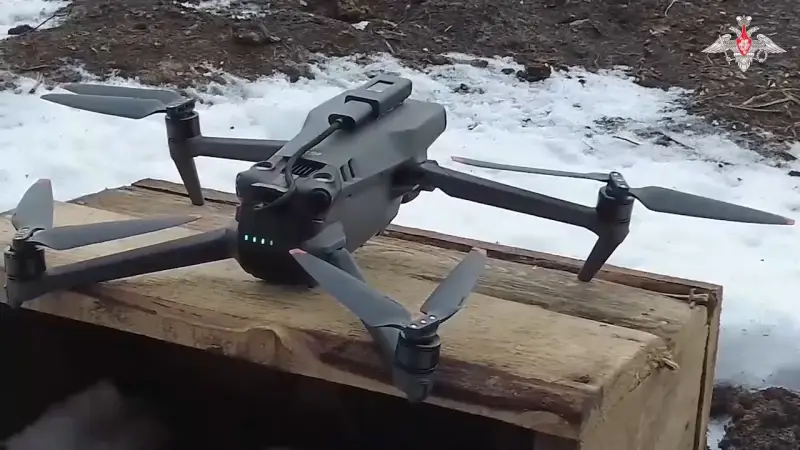
Reconnaissance UAV during preparation for departure. Photo by the Russian Ministry of Defense
A properly assembled kit of this kind allows a fighter to be outdoors for a long time and perform tasks without any threat to health. In addition, modern equipment includes personal protective equipment that reduces other risks.
However, the presence of warm clothing does not exclude the need for shelters and rest areas. In this case, thermal insulation and a body source for heating are required. In frontline conditions, both existing buildings and structures and independently prepared structures, such as dugouts or dugouts, can be used for accommodation and rest of personnel.
It should be noted that the preparation of premises for personnel in a combat zone has its own specifics. Often such buildings have to be assembled only from locally available materials, which requires ingenuity. In addition, the shelter must be camouflaged to avoid detection by the enemy and subsequent attack. However, as practice shows, the construction of such structures requires some effort, but is not an overly difficult task.
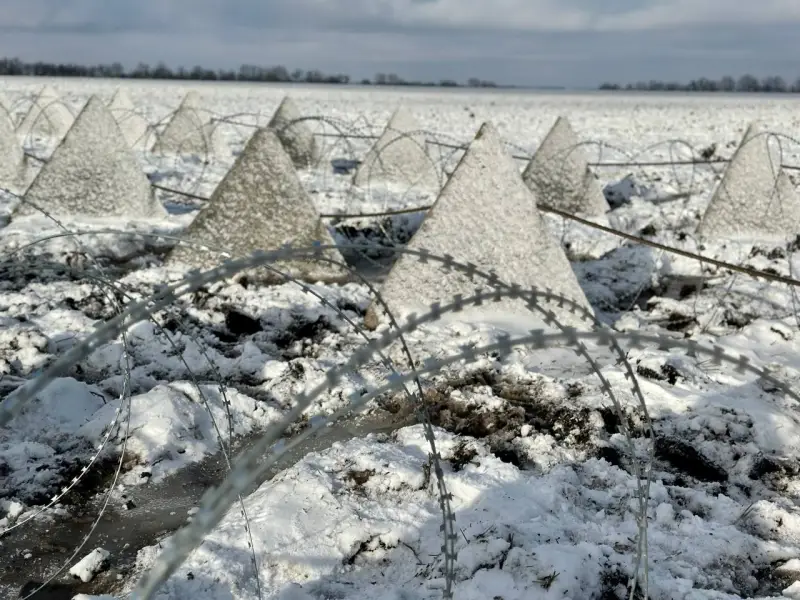
Defensive line on the border of the Belgorod region, December 2022. Photo Telegram / "Real Gladkov"
Equipment performance
Equipment also suffers from the cold. To maintain its efficiency and combat effectiveness, appropriate measures are required. The first of them are accepted at the stage of forming technical specifications and development. For example, domestic models of weapons and equipment must remain operational in a wide range of negative and positive temperatures. Without passing the appropriate tests, the product simply will not be accepted for service.
The following measures are taken at the operator level. Logistics and crews must take care in advance of using winter fuels and lubricants, carry out the necessary preparation of equipment, etc. Some principles of operation of combat and auxiliary vehicles are also changing. In particular, depending on the air temperature, a long warm-up period may be required after start-up.
The use of weapons also has its own specifics. For example, the firing characteristics of artillery systems directly depend on the temperature of the powder charge. Air temperature, wind, etc. also have a significant impact on the ballistics of a projectile. All these factors must be taken into account when calculating shooting data. For this purpose, domestic combat vehicles of the latest models, Tanks and self-propelled guns receive their own weather stations with a set of sensors.
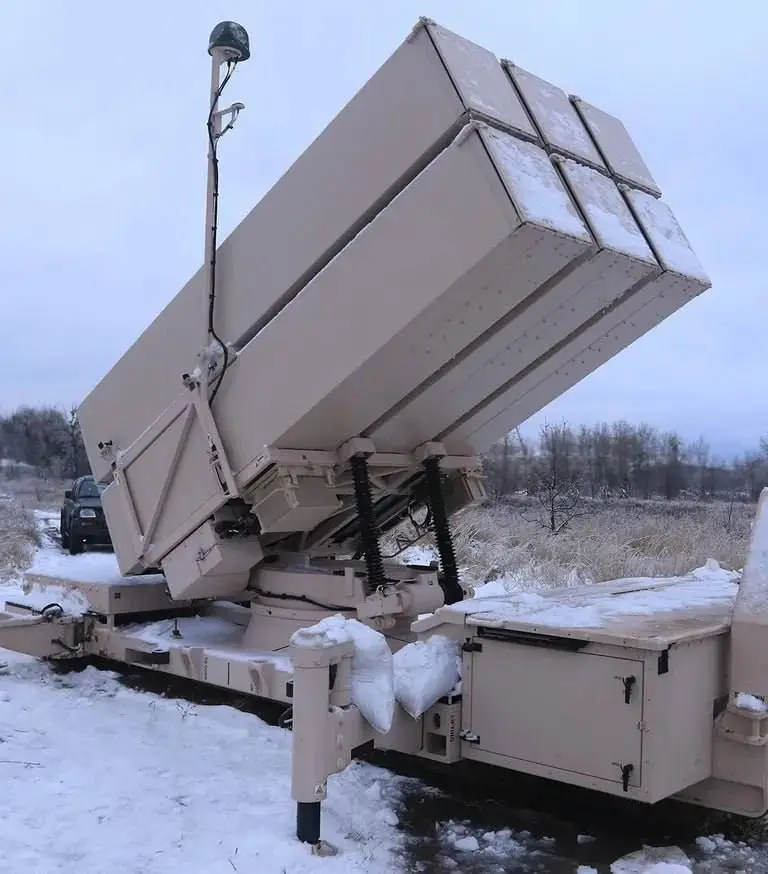
Ukrainian NASAMS air defense system last winter. Photo Telegram / "Military informant"
Winter complicates the operation of unmanned aerial vehicles aviation, which became widespread and became an important component of the equipment of troops. Low temperatures negatively affect the batteries of light UAVs. In addition, increased wind makes it difficult or impossible to fly to solve the assigned problems. Precipitation, at a minimum, makes it difficult to conduct reconnaissance or use weapons. Under certain conditions, UAVs actually cannot operate, and often you have to put up with this.
Against the background of the area
Winter places special demands on the camouflage of personnel, equipment and objects. First of all, we are talking about protection from visual surveillance and detection. You also need to pay attention to other detection methods, which may be more effective in the cold season than in summer.
In autumn and winter in the Donbass and other regions, the appearance of the terrain changes dramatically - due to the falling of leaves, withering of the grass and the appearance of snow, the landscape becomes paler, even black and white. Equipment or uniforms with protective/camouflage colors in green tones stand out against such a background. Accordingly, camouflage now requires equipment with a different color scheme, camouflage suits, etc. products.
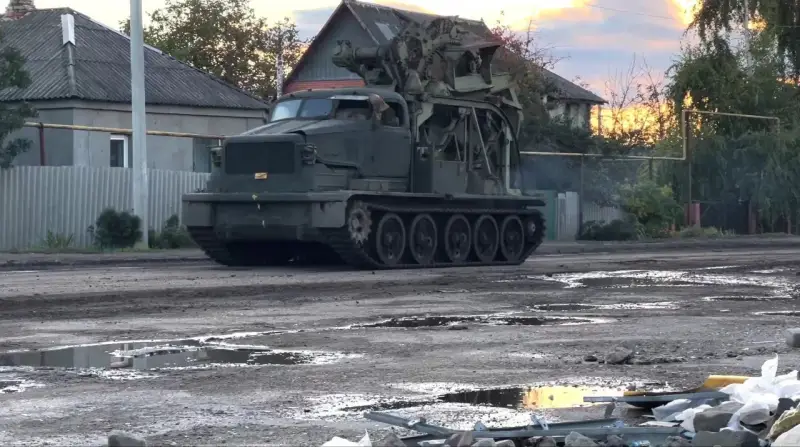
The BTM-3 trench vehicle is an assistant to soldiers in preparing positions in any type of soil. Photo Telegram / Dambiev
If it is necessary to work in snow, the equipment receives an additional white paint on top of the standard one. It is possible to use various covers, hanging elements, etc. Often such measures are taken at the grassroots level, and the soldier's renowned ingenuity comes into play.
Thermal imagers have become widespread, either on equipment or hand-held. In winter, the efficiency of such devices can increase, because... Warm objects stand out better against cold terrain. Winter clothing, originally designed to insulate heat, provides some protection from detection. There are also insulating covers for equipment. High efficiency is shown by the correct organization of positions, which does not allow the enemy to view them and detect people or objects by any means.
Earth and ice
In the autumn, Donbass and other regions are characterized by prolonged rains, leading to the soil becoming limp. However, in winter the wet ground freezes. These phenomena also create additional problems for armies, but at the same time they can provide certain advantages.
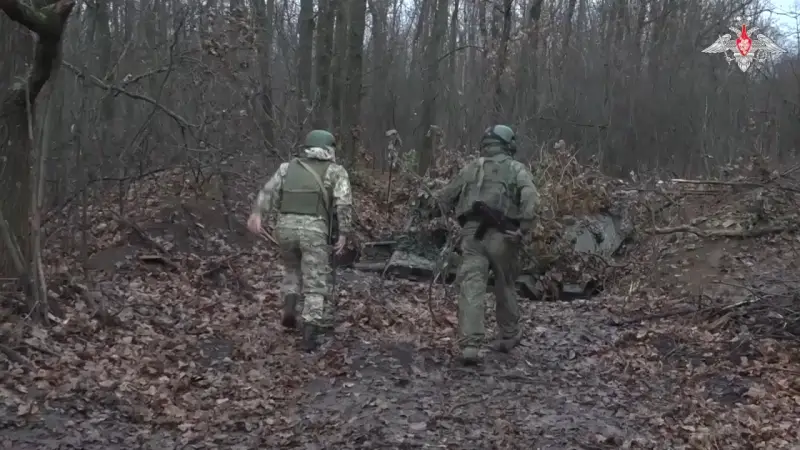
Self-propelled ATGM "Sturm-S" in a camouflaged position - before snow falls, "summer" means of camouflage are used. Photo by the Russian Ministry of Defense
Frozen soil is a rather difficult environment for carrying out engineering and construction work - digging trenches, preparing positions, etc. Excavation work using only hand tools becomes overly complex, time-consuming and labor-intensive. However, for this case, the engineering troops have various excavators and other earth-moving and engineering vehicles. It should be noted that this technique is useful not only in winter.
The soggy autumn soil seriously interferes with the movement of various equipment, incl. with increased cross-country ability. In winter it freezes and conditions for movement improve. As a result of this, personnel and combat vehicles have the opportunity to perform various maneuvers in areas previously considered too complex or inaccessible.
In any season
In general, winter is not the easiest time to conduct military operations. During this period, there are a number of characteristic factors that interfere with the work of personnel and equipment. In some cases, they even increase risks and create additional threats. All these factors need to be dealt with in one way or another and various measures must be taken.
As current events show, the Russian army was ready for combat work at any time of the year and in different conditions. Before the onset of cold weather, various measures were taken to eliminate or reduce the negative impact of climate and other factors. As a result, our armed forces can continue measures for the forced demilitarization of the Kyiv regime with the required efficiency.
Information